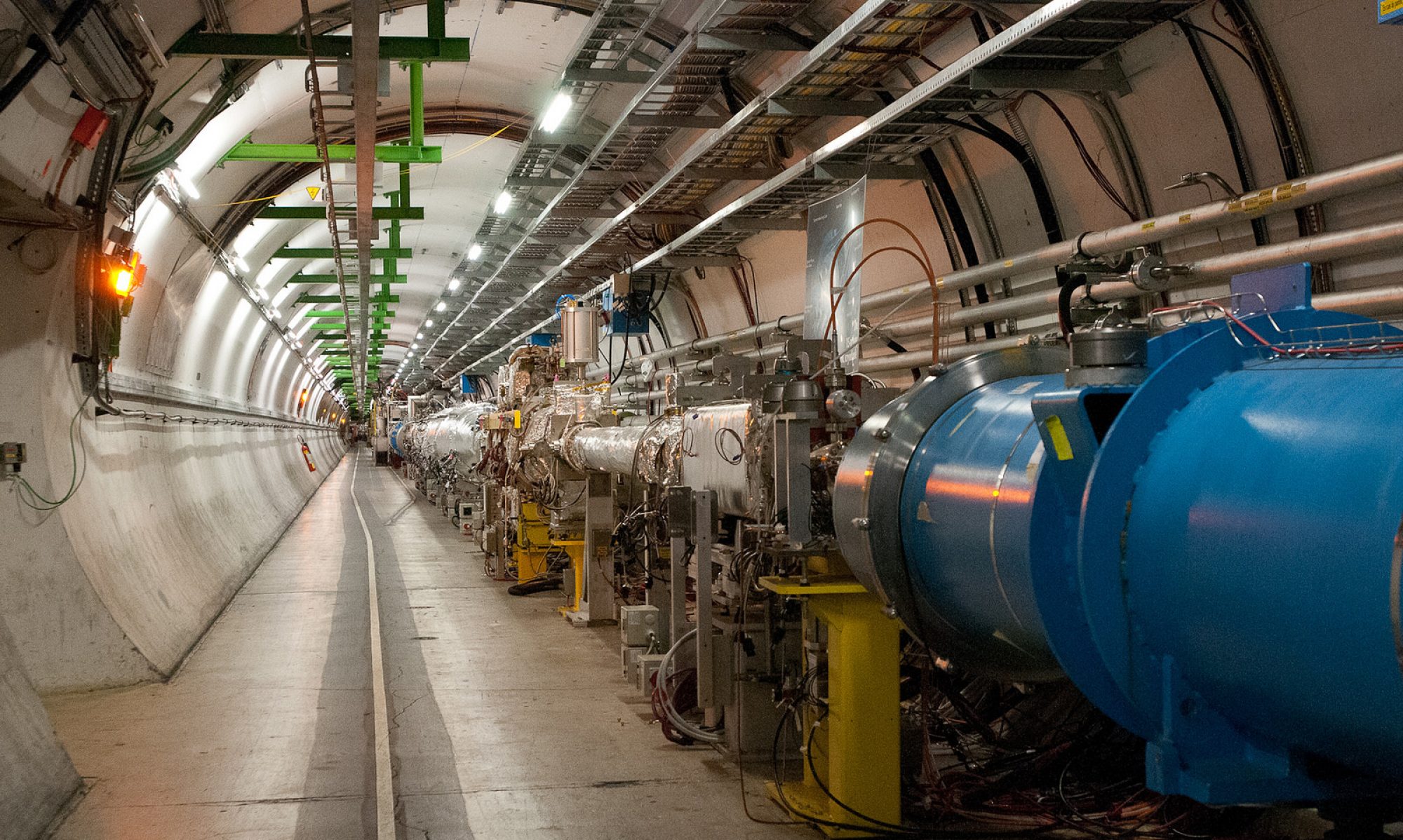I’ve been thinking a lot about cosmology. This is primarily because Jodi is teaching an elective course for undergraduates this semester. I’ve been sitting in on her lectures and doing the homework so that I can learn more about the subject. What’s been great about it is that I can connect cosmology directly to the particle physics that I love so much. For instance, in a recent homework problem we had to compute the equation of state for a cosmos dominated by a gas made of one kind of particle. Not only was this a fun exercise for thinking about the universe, it also taught me how to arrive at the “matter-dominated” or “radiation-dominated” universe.
A concordance of experimental astrophysics and cosmology has created a rather interesting picture of the real equation of state for our real universe. Observations of baryon acoustic oscillations (BAO), ratios of light elements (related to their production in big bang nucleosynthesis, or BBN), supernova observations, and measurements of the cosmic microwave background have revealed a universe that is dominated not by matter, not even by radiation, but instead by dark energy [1]. Whatever dark energy is, it appears to exert a negative pressure, accelerating the expansion of the universe.
The WMAP satellite [2], launched earlier in this decade, gave us the most stunning pictures to date of the cosmic microwave background. Its ability to render in fine detail the acoustic structure of the CMB allowed us to think about what kinds of players were at work in the early universe, just a few hundred thousand years after the big bang. Like a symphony tuning up and then frozen all at once in time, the tone and timbre of the instruments have been revealed. And yet, we do not know the nature of the instruments. We hear them in the CMB, yes, but we know nothing of their size, shape, number, or other properties.
In order to go deeper, a European experiment called Planck was launched early in the summer. Just this week, it reported its first data from scanning the CMB [3]. Five years of WMAP data were just made available in the last year, and here already we have another experiment out to measure the finer detail of the CMB. It’s refreshing to see one experiment entering its later years as a new experiment comes on line. This means that there won’t be a significant gap between the last and current generation of experiment, and the science can proceed. It also points to the strength of the European space and science programs.
So the work begins anew, and I hope that we soon will learn new things about the cosmic symphony frozen in the CMB. Will those discoveries point the way toward the nature of dark energy? Good news: we’ll know sooner than later.
[1] “Five-Year Wilkinson Microwave Anisotropy Probe (WMAP) Observations: Cosmological Interpretation,” E. Komatsu, et al., 2009, ApJS, 180, 330-376

